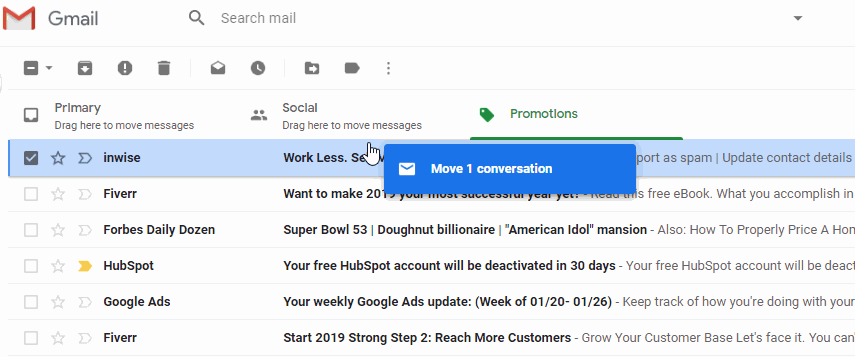A company goes from being a privately held company to a publicly traded company by floating its IPO. The IPO is an excellent way for the company to raise funds for whatever corporate purpose it needs funds for.
We read about how we as investors use our funds in the IPO, but let’s understand the company’s point of view. After allotment, the company receives the funds it was planning to raise via the IPO and grants the shares to the selected investors. The company will now use the funds raised for the purposes it mentioned in the prospectus while the shares will list on the stock market.
But what now? After the shares are allotted, the company loses ownership of the shares it granted in the IPO and they are traded free from the company’s control in the market. This means that if you decide to sell the shares you received from the IPO, the company does not receive a single penny from the sale of your shares, it was already paid for the same at the time of the IPO. If you make a profit on the sale of your shares, the company does not receive a single paisa from your profit.
So, Is listing a one-time thing?
Not necessarily. A company can be listed more than once, provided it was delisted (removed from the exchanges) the first time.
Let’s take the example of Ruchi Soya (currently named Patanjali Foods Ltd.), the FMCG company. The company was a well-performing business that was founded in 1986 but eventually went bankrupt and was delisted. It was taken to the bankruptcy court and was subsequently acquired by Patanjali and relisted on the bourses in January 2020, after which it provided 9,000% profit in 5 months!
So, how will the company raise funds after an IPO? There are several ways for a company to raise funds.
One of the most well-known means to raise funds is via debt. Debt can take several forms such as bank loans, private loans, issues of debentures, etc. For simplicity’s sake, let’s talk about bank loans. The bank will be granting loans to a company and will be expecting interest on the loaned-out amount, repaid by the company over a certain period of period.
Didn’t we see that loans are bad?
Considering the regular payments one needs to make, it is a disadvantage for several entities. However, companies that have listed are generally in a condition to afford loans i.e. they can take the loan and repay it accordingly. Moreover, debt financing has certain other benefits:
- You do not hand over equity to the bank, so you do not dilute ownership in the company and maintain control.
- Debt repayments are available to businesses as deductions i.e. a company will be paying less tax if it properly uses debt financing.
- Timely repayment of debt also helps the company improve its CIBIL Rank. This means that the next time a company applies for a loan, it will be able to do so faster and more efficiently.
However, debt is certainly not the only way a company raises funds. Companies may choose not to take loans if they want to keep their balance sheet spotless, or if they already have a lot of debt outstanding. If a company has too much debt on its balance sheet, it is bad for the company and it displeases the investors, which could result in the company’s share price declining as well.
If not debt, companies can raise funds through shares. Two ways to go about it for a listed company are:
- FPOs= A Follow-on Public Offer (FPO) is similar to an IPO. Everyone is eligible to participate in this offer where the company is offering additional shares for listing. The procedure of an FPO is similar to that of an IPO and the participants of the issue are the same as the IPO. This method lets the company raise funds from the public, including both existing and new investors, for any corporate purpose without raising the number of liabilities on its balance sheet.
- Rights Issue= A rights issue is fundamentally similar to an FPO. The company is diluting its holding and offering it to investors to raise more funds. However, there is one very significant difference between the two: An FPO is offered like an IPO and anyone with funds is eligible to apply, but the same is not true for a rights issue. The rights issue is an issue that is offered only to the existing shareholders of a company.
Here, shareholders are given the ‘right’ to be subscribers to the company’s latest issue and buy more shares in the company in the ratio of their current holding at a price lower than its current market price.
For greater understanding, let’s consider the example of the 2022 rights issue of Suzlon Energy, the renewable energy equipment manufacturer.
The size of its right issue was Rs 1,200 crores where shareholders holding 21 shares were offered the right to purchase 5 shares at a discounted price of Rs 5 per share. If you as an investor were eligible, you could have either purchased the shares at a discount or sold your ‘right’ to someone else for consideration.
These are all external forms of raising funds where the company offers something to investors in return for the funds that they need. A company can also hold back its profits i.e. instead of giving it all out to its shareholders, the company would hold back part of the profits to reinvest them in its expansion plans, repay debt, or whatever corporate purpose they may have. This is called ‘Retained Earnings’. Generally, Retained Earnings are used to fund working capital requirements, repay debts, or for capital expenditures.











 1,499
1,499
